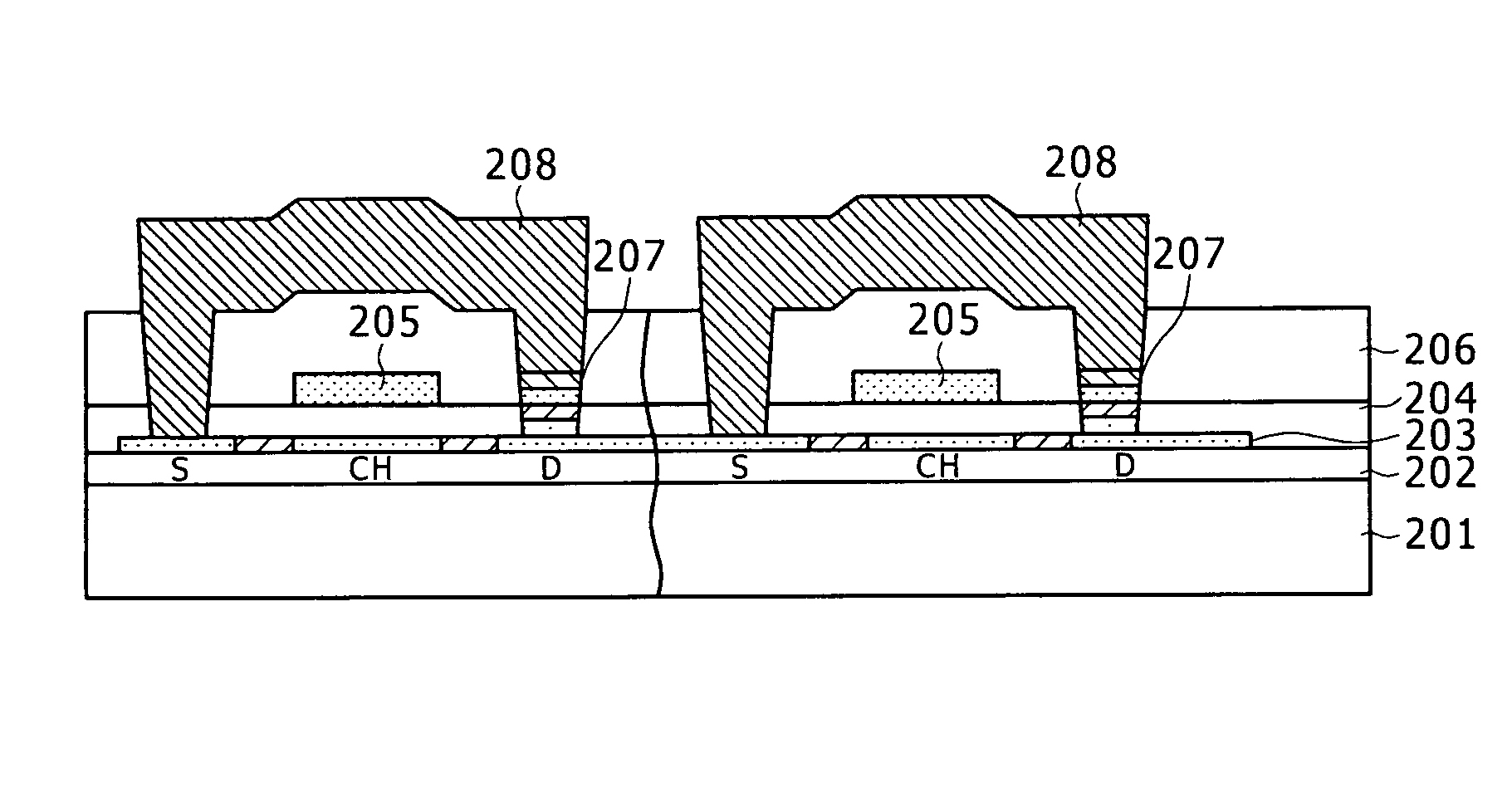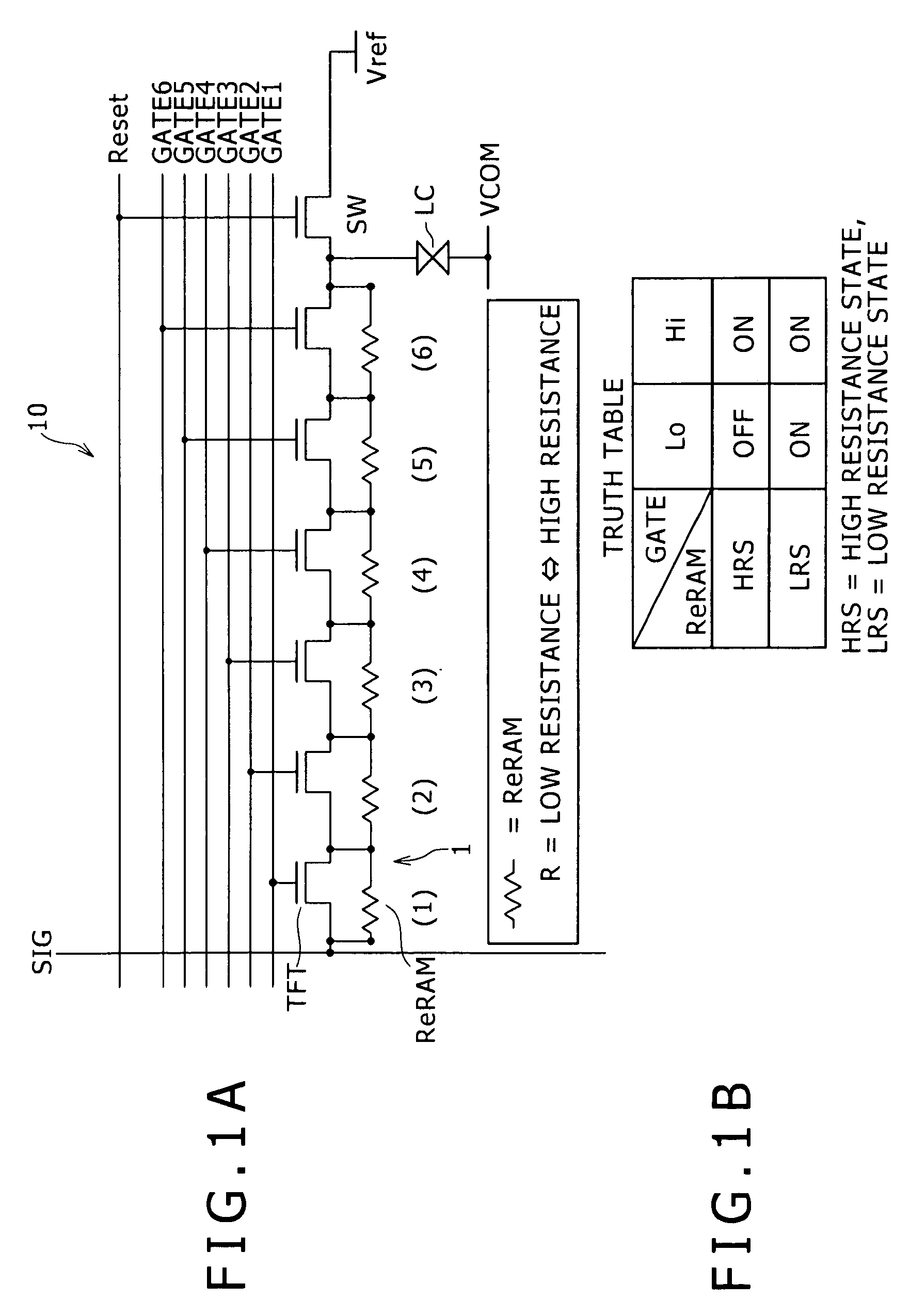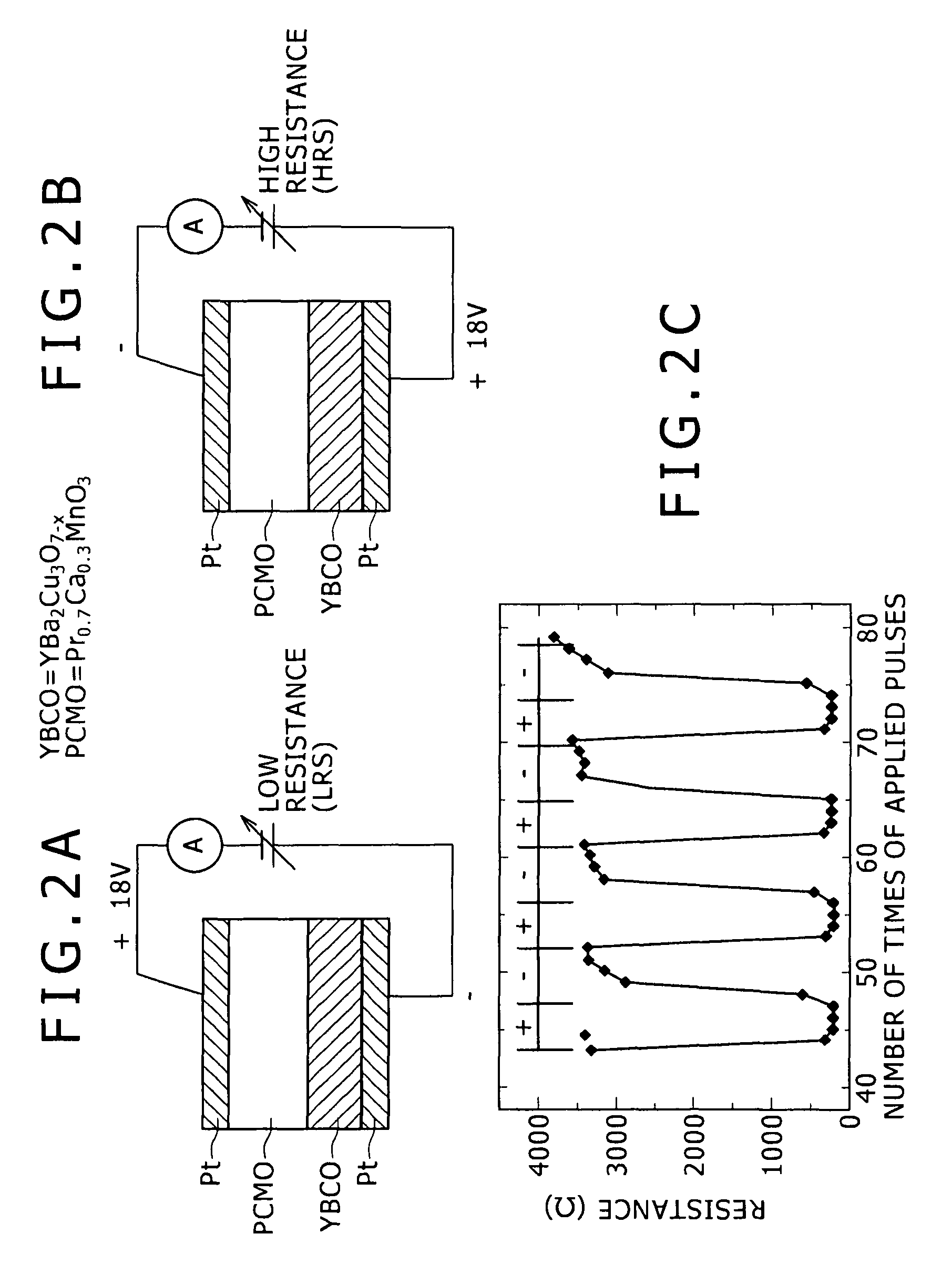Memory element and display device
a technology of memory elements and display devices, applied in semiconductor devices, digital storage, instruments, etc., can solve the problems of difficult promotion of multiple bits, reduced display desired, and inability to obtain bright pictures, etc., to achieve small area, reduce power consumption, and simplify the effect of circuit scal
- Summary
- Abstract
- Description
- Claims
- Application Information
AI Technical Summary
Benefits of technology
Problems solved by technology
Method used
Image
Examples
first embodiment
Entire Configuration
[0027]FIGS. 1A and 1B are respectively a schematic diagram showing a configuration of a memory element and a display device according to a first embodiment of the present invention, and a diagram showing a truth table. This schematic diagram is a schematic circuit diagram showing a portion for one pixel of an active matrix type liquid crystal display device. A pixel 10 includes a memory element 1.
[0028]As shown in FIG. 1A, the memory element 1 is composed of a parallel combination of a thin film transistor TFT and a resistance change element ReRAM. The TFT includes a semiconductor thin film in which a channel region, and an input terminal and an output terminal (a source and a drain) located on both sides of the channel region, respectively, are formed, and a gate electrode overlapping the channel region through an insulating film to become a control terminal. The resistance change element ReRAM is composed of one conductive layer connected to the input terminal ...
example 1
STRUCTURAL EXAMPLE 1 OF RESISTANCE CHANGE ELEMENT
[0039]FIGS. 2A and 2B are respectively schematic views showing a concrete structural example of the resistance change element ReRAM. Here, FIG. 2A shows the low resistance state LRS of the resistance change element ReRAM, and FIG. 2B shows the high resistance state HRS of the resistance change element ReRAM. As shown in these figures, the resistance change element ReRAM is composed of a pair of conductive layers, and at least one oxide layer disposed between the conductive layers paired with each other. In the structural example shown in these figures, each of the paired conductive layers is made of a metal Pt (platinum), and two layers of metallic oxide films made of PCMO and YBCO, respectively, are formed between the paired conductive layers. That is to say, in this structural example, the oxide layers are made of the metallic oxides, respectively. When the voltage having the positive polarity of, for example, +18 V is applied to th...
second embodiment
Manufacturing Processes
[0051]A method of manufacturing a liquid crystal display device according to a second embodiment of the present invention will be described in detail hereinafter with reference to FIGS. 4A to 4I. In the second embodiment, the memory element is formed on the side of a peripheral circuit for driving the pixel as well as on the pixel side. In each of FIGS. 4A to 4I, a process for forming a pixel portion is shown on the left-hand side, and a process for forming a peripheral circuit portion is shown on the right-hand side. However, the pixel portion and the peripheral circuit portion are simultaneously formed on an insulating substrate by utilizing the semiconductor processes. It is noted that unlike the first embodiment shown in FIGS. 3A to 3H, in the second embodiment, the TFT having a top-gate stricture is formed.
[0052]Firstly, as shown in FIG. 4A, a buffer layer 202 and an amorphous silicon layer 203 are continuously deposited on an insulating substrate 201 by ...
PUM
 Login to View More
Login to View More Abstract
Description
Claims
Application Information
 Login to View More
Login to View More - R&D
- Intellectual Property
- Life Sciences
- Materials
- Tech Scout
- Unparalleled Data Quality
- Higher Quality Content
- 60% Fewer Hallucinations
Browse by: Latest US Patents, China's latest patents, Technical Efficacy Thesaurus, Application Domain, Technology Topic, Popular Technical Reports.
© 2025 PatSnap. All rights reserved.Legal|Privacy policy|Modern Slavery Act Transparency Statement|Sitemap|About US| Contact US: help@patsnap.com



